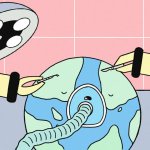
News • Greenhouse gas emissions
Operating rooms: the climate change contributor no one’s talking about
Two surgeons-in-training suggest some sustainable solutions for their energy-intensive discipline.

Two surgeons-in-training suggest some sustainable solutions for their energy-intensive discipline.

Engineers at the Massachusetts Institute of Technology (MIT) have developed a telerobotic system to help surgeons quickly and remotely treat patients experiencing a stroke or aneurysm.
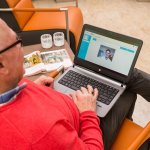
Cardiac rehabilitation can be done just as well at home as in the hospital. This is the conclusion of the most extensive research into ‘tele-rehabilitation’ to date.

E-mental health services could provide a response to these challenges and offer effective ways for prevention, diagnosis, treatment, and aftercare.

Remote monitoring devices and pacemakers supporting patients with conditions such as heart failure could be vulnerable to cyberattack, according to a leading cardiology expert.

X-ray vision, context-sensitive guidance, coordinator, training assistant and more: augmented reality (AR) has hit the OR. While still in its infancy AR does grow rapidly and has already shown enormous potential. University Professor Dr Rüdiger von Eisenhart-Rothe, Chair of Orthopaedics and Sports Orthopaedics at the Technical University Munich, explains the advantages of different AR…

Triage HF Plus, highlighted in the BCS conference session ‘Digital Innovation in Cardiology - What's new?’ is a digital heart failure care project that uses a customised algorithm to detect early signs of deterioration in patients with implanted devices. During her presentation ‘Digital solutions to identify worsening heart failure’, consultant cardiologist Dr Fozia Ahmed discussed the…

Will telehealth replace traditional in-person healthcare? Healthcare and digital health professionals around the world have moved beyond this question. Telehealth scenarios are here to stay, and so is traditional healthcare. The relevant question is how both can be combined for optimum results. This is the focus of hybrid care models. Jonah Comstock of HIMSS recently presented a webinar on…

Siemens Healthineers has recently started offering its customers WeScan, a new service that helps healthcare providers to perform MRI examinations if they lack qualified radiology staff. With the WeScan service, customers may seek access to a pool of skilled remote imaging technologists who help operate the MRI scanner using syngo Virtual Cockpit, the remote scanning software of Siemens…

Israel’s first virtual hospital has been created following the advances and applications learned from using telemedicine tools and techniques to care for coronavirus patients in isolation wards. Sheba Beyond was established in January and over the last few months has successfully delivered care to patients across a range of areas. The development of the project was outlined to the DMEA –…

Medical monitoring tech company Umana Medical announced a collaboration with the Preventive Cardiology and Medical Prevention, Center of Cardiology at the University Medical Center Mainz and Bayer AG on a clinical study (MyoMobile study) to explore a novel real-time remote cardiac monitoring device in patients with heart failure.

A new research project will embrace the combination of 5G telecommunications technology and AI to offer continuous remote monitoring to seriously ill heart failure patients, for example those with Left Ventricular Assist Devices (LVADs).
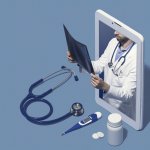
Accessible and affordable healthcare is one of the topics of Healthcare Automation and Digitalization Congress. It will take place in Zurich, Switzerland on the 27th - 28th of September, 2021. At the Congress, top-management from healthcare providers and pharmaceutical companies, healthcare professionals, IT managers, and heads from technology companies will discuss the developing ways of the…

Coronavirus-associated concerns dominate the Top 10 list of important technology hazard risks for hospitals, in an annual report published by ECRI, a nonprofit technology Pennsylvania research firm. The list is derived from ECRI’s team of technology experts who monitor hospital and healthcare organizations, and published to inform healthcare facilities about important safety issues involving…

Telepathology remains number one application for digital pathology, according to expert Professor Liron Pantanowitz, Professor of Pathology and Director of Anatomical Pathology at the University of Michigan. Speaking at the ‘7th Digital Pathology and AI Congress: Europe’, Pantanowitz outlined advances in telepathology, and its enabling access to broader expertise, image sharing and rapid…

As a world leading manufacturer of medical devices, the subclassification of Contec Medical products includes numerous series for multi-parameter monitoring, ECG, oximeter, blood pressure, telemedicine health, respiratory sleep, and more. With the frequently increasing occurrence of respiratory diseases, Contec Medical reports on its great efforts in the research and development of related…
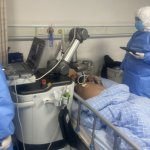
Ultrasound specialists at the Hainan Hospital of Chinese People’s Liberation Army General Hospital in Sanya and the Zhejiang Provincial People’s Hospital of Hangzhou successfully conducted robotic tele-ultrasound examinations over a 5G network of four patients with confirmed and suspected Covid-19. They were in Tongxiang and Wuhan, cities some 2600+ kilometres distant.
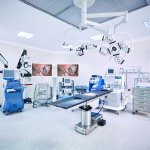
Sony has announced an update to its vendor-neutral medical imaging platform Nucleus. This version built in direct response to the pandemic, introduces remote patient observation with new recording functionalities for use in the operating room (OR), Intensive Care Units (ICU), endoscopy suites, interventional rooms or anywhere else in the hospital.

An up-and-coming gene therapy for blood disorders. A new class of medications for cystic fibrosis. Increased access to telemedicine. These are some of the innovations that will enhance healing and change healthcare in the coming year, according to a distinguished panel of clinicians and researchers from Cleveland Clinic. In conjunction with the 2020 Medical Innovation Summit, Cleveland Clinic…

There are many reasons why for some patients a visit to the doctor’s office is difficult or well-nigh impossible – limited mobility after surgery, old age, or a handicap. For others, particularly in rural areas, the doctor is often far away and/or difficult to reach due to poor public transport. In times of corona, another important issue emerged: infection protection.
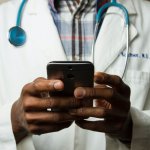
The Covid-19 pandemic has led to a significant increase in video visits between patients and their doctors, but for many older adults, the shift has cut them off from care, rather than connecting them. A study by researchers at the University of California San Francisco has found that more than a third of adults over age 65 face potential difficulties seeing their doctor via telemedicine, with…

The coronavirus pandemic created unprecedented upheaval and challenges within health systems, economies, and society. In hospitals, new ways of working had to evolve. Social distancing led to virtual consultations and teleradiology has found an added dimension. We asked three radiologists about the relevance of teleradiology during the epidemic, and what the future holds.
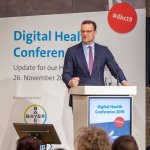
Focused on updating healthcare through digitisation, 41 experts and around 500 delegates gathered for the 4th ‘Digital Health Conference’ late in 2019. At the Berlin venue, they focused on solutions such as the potential lack of skilled staff, demographic changes, urbanisation and multimorbidity.

Following success of telepathology in the eastern region of Quebec, the service is set to be further expanded across its remote areas. There are also moves towards a fully digital service at some sites, to introduce tele-autopsy into remote regions and extend the geographical coverage further across the region. The latest developments were outlined at the Digital Pathology and AI Congress in…

The coronavirus crisis has accelerated the use of telemedicine in Spain with an increase in virtual consultation and positive impact on workflow. The challenge will be to make these changes permanent, according to a panel of experts who took part in a conference last June in Barcelona. Spanish patients and healthcare professionals have widely accepted virtual consultation as a new alternative to…